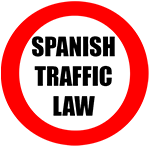1. Exceptionally or when provided for by some rules or the legislation on traffic, motor vehicle traffic and road safety, acoustic signals that are not strident, and their unmotivated or exaggerated use is prohibited.

2. Acoustic warnings can only be made by drivers of non-priority vehicles:
A) To avoid a possible collision and, especially, on narrow roads with many curves.

On narrow roads where there are often two cars and there are bends that prevent the visibility of traffic in the opposite direction, the horn is usually used to warn of our presence to approaching traffic, with the aim of reducing the speed of the other car, make them stick to the right edge and so that passing the vehicle can be done safely.
B) Out of populated areas, to warn the driver of another vehicle the purpose of overtaking.

You can sound the horn before overtaking a vehicle to inform the driver of your intention to overtake it, so that it then stays to the right edge of the road.
C) To warn of their presence to the other road users, in accordance with the provisions of article 70.
When we want to overtake, for example, several vehicles over 12 metres, it is advisable to warn them of our presence so that the drivers of these vehicles leave a greater safety distance between them that allows us to overtake safely.
Knowing that you are driving behind, on one-lane roads for each direction, when it is possible to overtake safely, the drivers of these vehicles are able to warn you by right-flashing indicators or by pointing their arm backwards and forwards. It’s courtesy, not obligatory.

